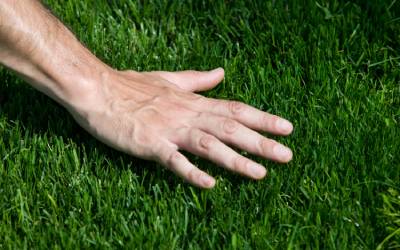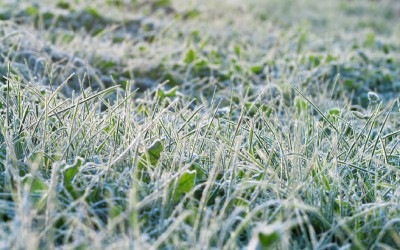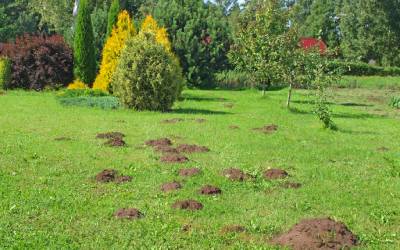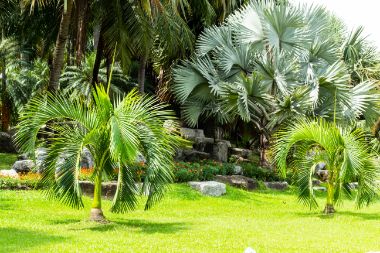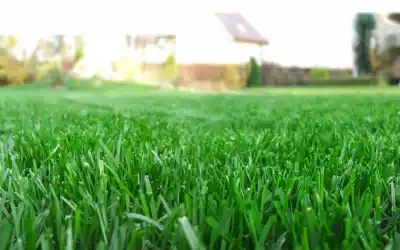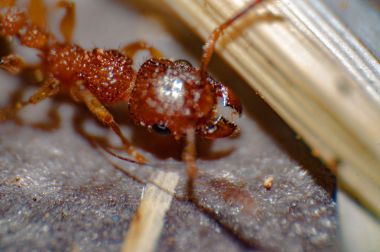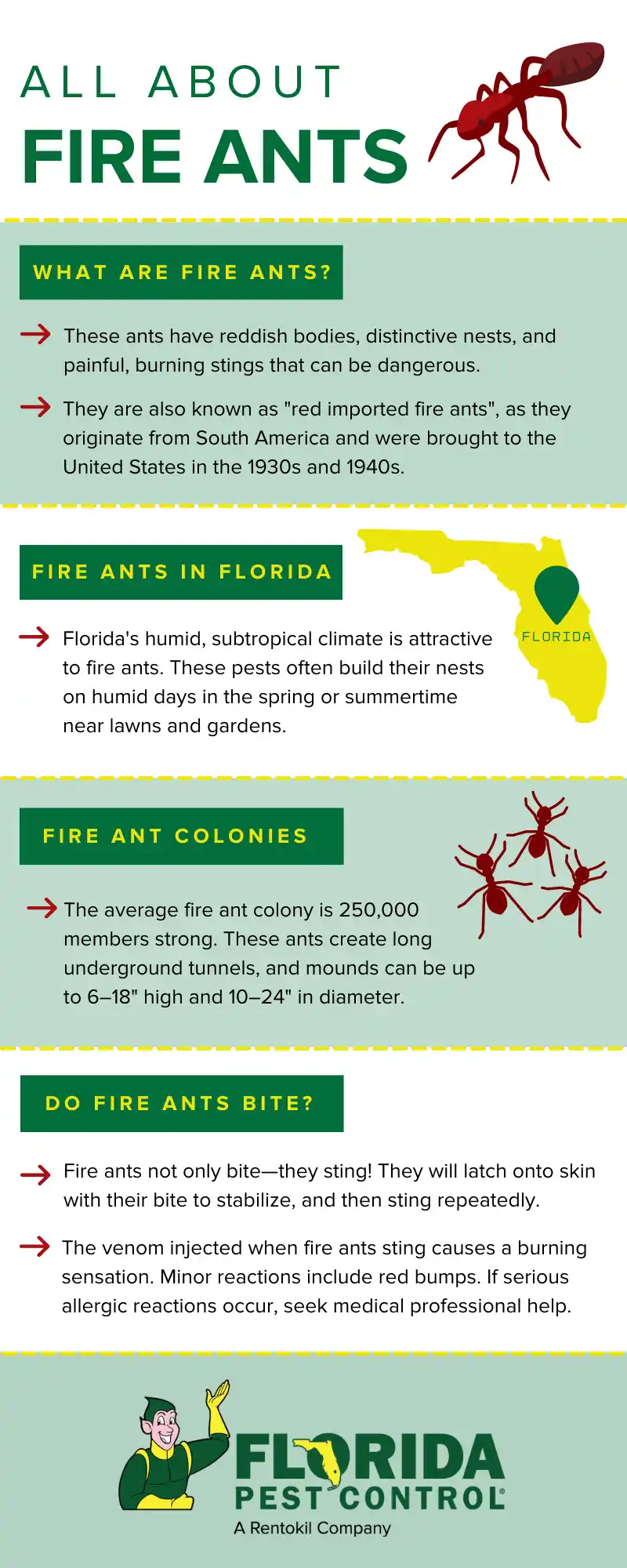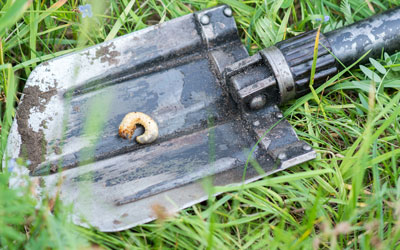Tips and Tricks to Prevent Lawn Pests (in Florida)
Lawn pests are notorious here in Florida. From chewing grass to leaving behind dirt mounds, these tiny critters have a big impact on the overall well-being of your landscape. Knowing how to prevent lawn pests is a crucial step in maintaining a beautiful, well-manicured lawn all year long. To help you out, the experts at Florida Pest Control have put together everything you need to know to help prevent Florida lawn pests.
The first step to keeping your yard pest-free* is to understand what types of insects and critters will try to invade. Getting familiar with the common lawn pests will help you identify infestations early on:
Best Practices to Prevent Lawn Pests
Getting rid of an infestation is much more challenging than preventing pests from invading in the first place. By spending a little bit of time on preventative maintenance, you could save a lot of time and energy later down the road. Here are a few great ways to prevent lawn pests:
- Regularly mow: Long, unkempt grass is the perfect environment for pests to hide out and nest. Regularly mowing will keep your lawn tidy and make it more challenging for pests to settle in.
- Fix moisture issues: Most pests thrive in damp areas, which is why they are drawn to lawns that are frequently wet. Overflowing gutters, leaky irrigation systems, and overwatering are just a few common causes of moisture issues.
- Control weeds: Weeds are more than just a cosmetic issue for your lawn. They can also attract pests, which is another reason why you should keep your grass weed-free as much as possible.
- Keep your yard clear: Insects and rodents love to live in piles of sticks, twigs, leaves, and other organic matter. Rake and clean your yard regularly to prevent pests from nesting on your property.
Signs of an Infestation
It can be challenging to spot an infestation before it has the chance to establish itself. However, the sooner you spot pests, the easier they will be to get rid of. Keep an eye out for these warning signs of an infestation to spot pests before they can spread:
- Burrows or dirt mounds
- Holes or gnaw marks
- Patches or strips of dead grass
- Live pests or eggs
Use “The Drench Test” to Find Pests
Drench tests are an excellent tool for identifying infestations. To perform one, all you need to do is mix 3-4 tablespoons of dishwashing liquid with approximately 2 gallons of water. Once thoroughly mixed, pour the liquid out over a small patch of your lawn and wait for about ten minutes. If any pests rise to the surface, then you are likely dealing with lawn pests.
Easy Steps to Help Eliminate Lawn Pests
Pests can cause significant damage to your lawn, even in a short amount of time. That’s why you’ll want to take quick action as soon as you notice the signs on your property. To get pests out of your lawn, follow these steps:
Clean Your Yard
Messy yards with lots of spaces to hide make the perfect environment for infestations to thrive. Taking a few minutes to tidy up your yard is one of the best ways to deter pests from invading your space. Here are our top tips for making your yard less appealing to pests:
- Rake away leaves and debris
- Regularly trim your grass
- Clean out your gutters
- Remove toys, tools, and other clutter
- Avoid leaving pet bowls out
- Use lidded trash bins
Use Natural Pest Control Solutions
Now that your yard is clean and tidy, it’s time to drive out any pests that have settled into your lawn. To do so safely, we recommend using natural pest control solutions that minimize your environmental impact. Here are some of the most effective natural pest remedies:
Invite Natural Predators to Your Yard
Beneficial birds and insects will not only fill your yard with life, but also keep the harmful critters at bay. Encouraging natural predators in your yard is a great way to control pest populations while remaining environmentally responsible. Consider encouraging these natural predators to enter your yard:
- Wrens
- Bluebirds
- Lacewings
- Praying mantises
- Ladybugs
- Big-eyed bugs
Use Neem Oil Spray
Neem oil is an excellent natural pest repellent. Derived from the seeds of neem trees, this oil is biodegradable and nontoxic to pets. Additionally, it is antibacterial and antifungal, which can make it effective against more than just pest infestations.
Most garden stores carry neem oil spray, though you can make your own by mixing a quart of water with two teaspoons of neem oil and one teaspoon of mild soap. You can spray this mixture directly onto the plants to deter pests.
Aerate and Dethatch Your Lawn
All lawns have a thin layer of thatch near the roots, which is made up of organic matter like dead grass stems or lawn clippings. While a thin layer can be healthy, too much buildup can become the perfect environment for pests to nest. Once your thatch measures over ¾”, it’s time to take action.
Aerating is one of the best ways to break down the thatch layer. To do so, you will use a special tool to poke small holes throughout the surface of your lawn. This helps loosen up thatch while allowing air and nutrients to penetrate deep into the grass roots. In addition to breaking down the thatch, aerating promotes stronger and healthier grass that is more resistant to pests.
Try a Pesticide
Some infestations are stubborn. If you’ve tried everything and are still dealing with pests in your lawn, then it may be time to try a chemical pesticide. That said, pesticides are serious products that contain intense chemicals that could cause serious damage to your health or the environment if used improperly. It’s crucial to do your research or work with a professional before applying a treatment.
When to Use a Pesticide
Pesticides contain harsh and potentially dangerous chemicals, which is why you should always use them as a last resort. Improper usage will put your family, pets, and property at an unnecessary risk. You should only use pesticides if:
- You have researched all risk factors: Households with small children or pets have a higher risk of accidental exposure when using pesticides. Examine your property and household to determine if it is possible to safely apply a treatment. If you are unsure of the risk factors in your space, always consult a professional.
- You’ve tried natural methods first: Pesticides contain serious chemicals that should only be used as a last resort. To treat infestations in a safe and responsible manner, try natural pest control methods or get the help of an expert before turning to pesticides.
- You are dealing with a dangerous pest: Some pests pose a bigger threat to your health and wellbeing. If you are dealing with a severe infestation or facing a potentially dangerous pest, such as a rat, then pesticides may be the most appropriate course of action.
- You’ve chosen a safe product: There are thousands of pesticides available on the market, and not all are created equal. It’s crucial to know how to read the label to find a safe and effective option.
- You are complying with local regulations: Some cities or HOAs have strict rules surrounding pesticide applications. Be sure to check local guidelines to ensure you are following all rules and regulations.
- You are confident in your ability to safely handle the chemicals: If you have any questions about pesticides or have any doubts about your ability to safely apply a treatment, then you should always reach out to a professional. Paying a small amount for an expert’s help is worth preventing a serious accident.
When it comes to pesticide application, it is crucial that you take every safety precaution. Mistakes could expose your family or pets to potentially deadly chemicals, which is why you should always handle these chemicals with care. To safely apply a pesticide, remember these guidelines:
- Always carefully read and follow manufacturer instructions
- Wear all safety protection gear, such as gloves and glasses
- Be meticulous and accurate with your measurements
- Keep all pets and children away from application areas
- Leave a warning sign indicating that pesticides are on the lawn
- Have a safety plan in case of accidental chemical exposure
Professional Lawn Pest Control At Your Service
Lawn pest control can be a tricky process, especially if you are dealing with a severe infestation. That’s where the team at Florida Pest Control can help! For over 70 years, our skilled experts have gone the extra mile to ensure peace of mind for you and your family by protecting your property from unwanted pests. Whether you are facing an active infestation or want to set up preventative measures, we’ve got you covered! Just contact us today to get your free inspection.

